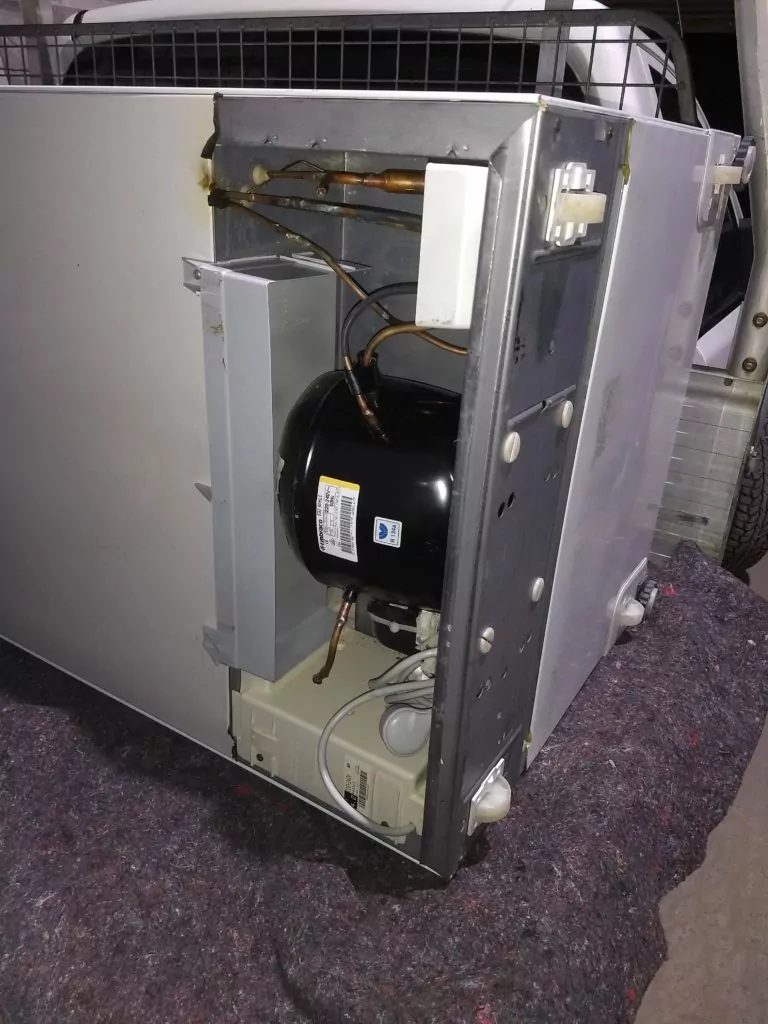Transporting a freezer laying down is not recommended. Doing so can damage the compressor and affect its performance.
Moving a freezer requires careful planning to ensure it arrives safely at its destination. Freezers contain sensitive components that can be easily damaged if not transported correctly. Laying a freezer down may cause the oil to flow into the cooling lines, leading to potential malfunctions.
It’s important to keep the freezer upright during transport to protect its internal mechanisms. If you must lay it down, allow it to sit upright for several hours before plugging it in. This helps restore the oil to its proper place. Proper handling will ensure your freezer functions efficiently in its new location.
Introduction To Freezer Transportation
Transporting a freezer correctly is very important. Improper transportation can cause damage. Freezers contain fluids that can leak if laid down. This can lead to malfunctions or breakdowns. Many think it’s okay to transport them this way. This is a common misconception. Always keep the freezer upright during transport. This protects the compressor and other parts. If you must lay it down, allow it to stand up for a few hours before use. This helps fluids settle back into place. Proper handling extends the life of your freezer.

Credit: m.youtube.com
Risks Of Laying A Freezer Down
Transporting a freezer lying down can cause serious risks. One major issue is oil migration. This occurs when the oil in the compressor moves away from its normal position. If the oil is not returned, it can damage the compressor.
Another concern is the potential for coolant leaks. Coolant is necessary for the freezer to work properly. If the freezer is on its side, the coolant may leak out. This can lead to high repair costs and even a need for replacement.
Always keep the freezer upright during transport. This helps avoid oil issues and coolant leaks. Proper positioning ensures the freezer functions well after the move.
Understanding Freezer Design
Freezers have a specific design that helps them work properly. Understanding how they are built is key. Most freezers contain compressors, evaporators, and insulation. These parts work together to keep food frozen.
The orientation of a freezer matters. Placing it upright helps the refrigerant flow correctly. When a freezer lies down, the compressor can get damaged. This can affect its ability to freeze food.
Here are some important points about freezer orientation:
- Keep freezers upright for best performance.
- Laying down can cause leaks in the system.
- Always wait a few hours before plugging in a moved freezer.
Preparation Steps Before Moving
Start by defrosting the freezer at least 24 hours before moving. This prevents water damage during transport. Clean the interior with a mild soap solution. Make sure to remove all food items, including ice. Wipe down surfaces and let them dry completely.
Next, secure loose parts like shelves and bins. Use tape to hold them in place. This step helps to avoid damage during the move. Consider removing doors if they are heavy or could swing open. Wrap the freezer in blankets for extra protection.
Proper Lifting And Moving Techniques
Transporting a freezer requires proper lifting techniques. Always use your legs, not your back. Use a dolly or hand truck to avoid strain. Secure the freezer with straps to prevent movement.
Essential tools include gloves for grip and padding to protect surfaces. A measuring tape helps ensure the freezer fits through doorways. Use blankets to cover the freezer during transport.
Safety measures are vital. Always wear closed-toe shoes to protect your feet. Clear the path of any obstacles to avoid tripping. Have a friend or helper assist you to make lifting easier.

Credit: www.youtube.com
Alternative Methods To Transport A Freezer
Transporting a freezer upright offers many benefits. It helps keep the compressor safe. This position prevents damage to the internal parts. Movers can handle the weight better when upright.
Using professional movers can ease the process. They have the right tools for safe transportation. Their experience reduces the risk of accidents. Movers will ensure your freezer arrives undamaged.
Hiring experts saves you time and effort. They know how to navigate tight spaces. You won’t need to worry about heavy lifting or potential injuries.
Post-transportation Tips
After moving a freezer, allow it to stand upright for at least 24 hours. This helps the oil settle back into the compressor. Check the power cord for any damage before plugging it in.
Once powered, monitor the temperature settings. It should reach the right temperature within a few hours. Keep an eye on it during the first day.
Refill the freezer only when it has reached the correct temperature. This ensures food stays frozen properly. Avoid opening the door too often to maintain the cold temperature.

Credit: www.whybuy.com.au
Faqs On Freezer Transportation
Transporting a freezer while laying it down can be risky. Oil from the compressor may leak into the cooling lines. This can cause damage to the unit. Always keep the freezer upright during transport for safety.
Sometimes, moving a freezer on its side is unavoidable. If this happens, let the freezer sit upright for at least 24 hours before plugging it in. This helps the oil return to the compressor.
Most manufacturers recommend keeping the freezer upright to avoid voiding the warranty. Check your warranty terms for specific guidelines. Insurance coverage may also depend on how the freezer was transported.
Conclusion
Transporting a freezer lying down can be risky. It may lead to compressor damage and refrigerant leaks. Always opt for standing transport whenever possible. If lying down is unavoidable, take precautions. Allow the unit to sit upright before plugging it in.
This ensures proper functionality and longevity of your appliance.
